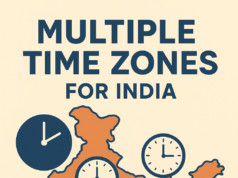Delhi has huge car ownership. A news story found that if Delhi’s cars were stacked bumper-to-bumper, they would reach all the way to Chile. Parking these cars is a challenge. Delhi’s urban design, and its transport policy over the years has resulted in a situation that incentivises people to own cars. Probably the only reason to not own a car, is not being able to afford one. Under-connected public transit, and poor walkability make owning private transport a rational response. As one rises on the income ladder, aspirations rise too, and cars join the household. Unfortunately, car ownership imposes a cost on the society at large. Cars take space both on and off the road. Allocating space and governing who gets to park where is a cause for conflict, also captured in a Tamil movie, Car Parking.
It’s remarkable to observe that the problem has many solutions. All unique to each neighbourhood and their constraints. These solutions and how they emerge are illustrations to the seminal work on Governing the Commons by economist Elinor Ostrom. At least four principles laid down in her work emerged in front of my eyes while I was walking to the office of the Centre of Civil Society in A Block, Hauz Khas.
The picture above is an ingenious method used by a car owner in the neighbourhood to reserve a parking spot. At first sight it may come across as a hostile claim on a parking spot, but when layers are peeled it reveals a governing system for car parking that has evolved in the neighbourhood.
Derek Wall in his book, “Elinor Ostrom’s Rules for Radicals”, summarises eight key principles that illustrate and determine the success of common pool resources. The space between the paved road and the buildings on the block is owned by no specific person. But at the same time, it’s not a free-for-all for anyone to park their car. There are many unsaid rules that evolve over repeated interactions between the residents of the community. There are four main principles worth observing, in this instance.
First, as Derek Wall points out in Ostrom’s work, for commons to be sustainable they need to have clearly defined boundaries. That A Block parking spots are for residents of the society alone, is amply conveyed by gated metal doors at several entry and exit points in the block. This is true for many other neighbourhoods like Chittaranjan Park and Greater Kailash.
Second, the rules that emerge fit local circumstances. What works in one locality may not work in another. Gated societies have their own features. Sector D, Pocket 4, in Vasant Kunj has its own layouts, design, and residents, and it’s visible for me as a resident that parking norms are different between the two neighbourhoods. The contrast is wider when compared to a locality in a different city like Mumbai, too.
Third, effective monitoring is important for parking norms and conventions to stay in place. There are elements of policing that help too. Signages that say “tyres will be deflated” are not uncommon at the parking spots claimed by residents. There are clear boundaries established, in some instances by labelling the spot with the resident’s house number.
Fourth, there are means to resolve conflicts in a low-cost way. Residents often create WhatsApp groups where a car parked wrong, or an alien car, is identified and asked to be removed. There may be unpleasant exchanges for repeat offenders, but it all mostly stays within the realm of instant texts.
While there are many other features that one can identify in how societies govern their parking spots, the central insight is their ability to do so. Before a municipality takes charge, or laws are dictated and enforced by state agencies, being visible and open to this governance is crucial. What is true for Hauz Khas and Vasant Kunj is true for most other neighbourhoods across the world. These gradual achievements vary in their character and diversity of solutions, but they exist and are worthy of admiration. Observing how such orders emerge in our everyday lives is important and can teach us a lot. It can at least check an intuition to propose interventions and plant ideas to interact and improve the order instead.
Post Disclaimer
The opinions expressed in this essay are those of the authors. They do not purport to reflect the opinions or views of CCS.




